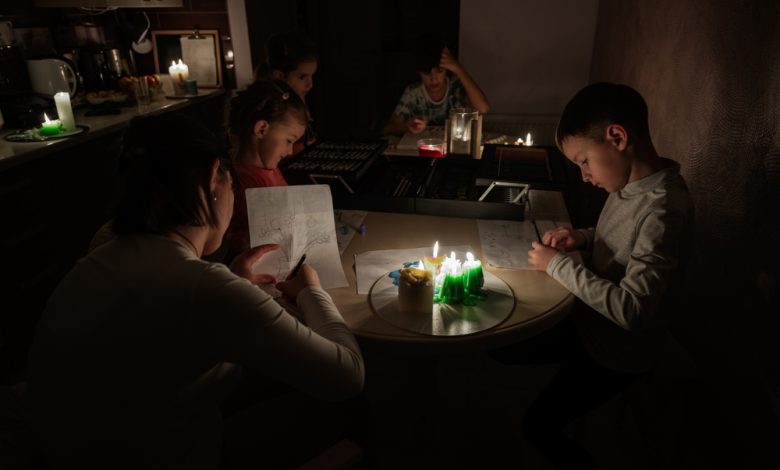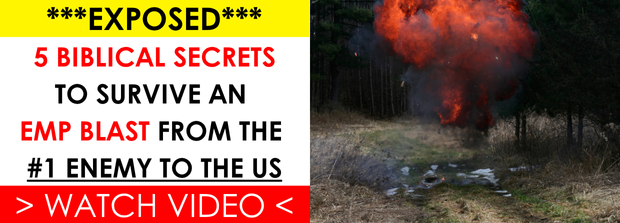Why Everyone’s Talking About Blackouts (And You Should Be, Too) – Survivopedia

Power outages used to be rare. Today they happen more often, and each year they seem to grow larger and last longer. In April 2025, the entire Iberian Peninsula went dark. Transportation stopped, hospitals ran on backup generators, and phones and internet went silent. That was not a one-time event.
Right here in the United States, regulators have been warning that our power grid is stretched to its limit. The system that keeps our lights on is no longer dependable. This is not theory. It is the reality we live in.
Understanding why blackouts are becoming more common is important. Taking action to prepare for them is even more important.
Much of the power system in the United States is old. Wires, transformers, and substations were built decades ago. Many of them have already passed their intended lifespan. Storms, heatwaves, and wildfires put heavy strain on this weakened network. Each year the damage grows.
Rising demand makes things worse. During hot summers, millions of air conditioners run at once. The grid struggles to meet the load. At the same time, several reliable power plants have been retired without equal replacements. If the current path continues, federal reports suggest we could see up to a hundred times more blackouts by 2030.
There is also the risk of deliberate attack. Substation shootings and acts of vandalism have increased sharply. In 2022, reported physical assaults on energy infrastructure rose more than seventy percent from the previous year. Some of these incidents used nothing more than a rifle to knock out power for tens of thousands of people.
Digital threats are growing too. Hackers have already proven they can take down entire sections of national power grids. Ukraine experienced a major cyberattack in 2015 that shut down large parts of the country. American agencies warn that similar attempts on U.S. infrastructure are possible. The more systems move online, the more openings exist for intrusion.
Other nations face the same danger. Pakistan, Bangladesh, and parts of Europe have all suffered blackouts affecting millions. Some were caused by fuel shortages, others by storms or mismanagement. The pattern is clear. No nation is immune. No city is guaranteed to stay lit.
>>The last few years have proven that modern comfort is fragile. Discover the old-world survival skills that kept communities alive before electricity existed.
Short outages are inconvenient. Long ones can threaten lives. When the power fails, every part of daily life changes. Preparing now can prevent chaos later. Focus on five basics: water, warmth, food, lighting, and communication.
Water
When the grid goes down, most water systems stop working. City pumps lose pressure. Private wells stop drawing. Every household needs a water plan.
Store at least one gallon per person per day. Two weeks of supply is a good goal. Keep the water in clean containers and include extra for pets, hygiene, and cooking.
If you hear that a blackout is coming, fill bathtubs and spare jugs. Always keep a way to purify water. Boil it for a full minute or filter it and add plain bleach at eight drops per gallon.
>>Even if taps run dry, you can still pull clean drinking water straight from the air. Watch how this off-grid water system works in real emergencies (VIDEO).
Heat and Cold
In winter, loss of heat becomes dangerous quickly. Homes with wood stoves or fireplaces should keep seasoned wood ready. Propane or kerosene heaters marked for indoor use can help, but always follow safety rules. Never run a generator or grill inside. Carbon monoxide can kill silently.
Choose one room to focus on. Block drafts. Hang blankets across doors. Wear warm layers and use heavy sleeping bags. If the indoor temperature drops below freezing and cannot be raised safely, evacuation may be necessary.
Summer brings the opposite risk. In hot regions, blackouts can cause heat exhaustion or stroke. Use battery fans if possible. Stay on lower floors where air is cooler. Seek cooling centers if conditions become extreme.
Food
Without power, food storage becomes a race against time. Start by eating what will spoil first. Keep fridge and freezer doors closed. A full freezer stays cold for about forty-eight hours.
Store a supply of non-perishable foods that require no cooking. Canned meats, beans, fruits, peanut butter, and jerky all work well. Aim for one to two weeks of meals per person. Keep a manual can opener in your kit.
If you plan to use a camp stove or grill, cook outside or in a very well-ventilated space. Never indoors.
Include a few morale boosters like coffee, tea, or chocolate. Comfort foods lift spirits when stress runs high.
Lighting and Power
When darkness falls, simple light becomes vital. Keep flashlights, lanterns, and headlamps ready with spare batteries. Headlamps are especially useful for working hands-free.
Avoid candles whenever possible. They start too many fires. If you must use them, never leave them unattended. Safer choices include solar garden lights or hand-crank lanterns.
Backup power can be helpful. A gas generator can run essential appliances but only outdoors and away from windows. Smaller options like power banks or portable battery stations can charge phones or lights. Even a small solar panel can keep key devices running.
Communication
Once the grid fails, information disappears fast. Cell towers lose power and the internet shuts down. A hand-crank or battery radio can be your only reliable link to news and weather alerts.
Keep spare batteries or a solar backup. For short-range contact, walkie-talkies work well. Print or write down important phone numbers since electronic contact lists may become unreachable.
Power banks help keep phones running for several days. Some families invest in HAM radios or join CERT (Community Emergency Response Team) groups to stay connected when modern networks fail.

Blackouts are not rare events waiting somewhere in the future. They are already part of modern life. Cities, suburbs, and rural areas all face the same risk.
Preparedness starts before the crisis. Build your supplies. Write a plan. Practice what to do. Assign roles within your family so everyone knows their part. Decide ahead of time when you will stay and when you will leave.
Once the power goes out, choices shrink fast. Before it happens, you still have time to prepare.
Resilience begins with readiness. Store water. Stock food. Secure heat. Set up your lighting and backup communication. The more you prepare now, the steadier you will be when the grid fails.
Preparation turns panic into calm. It lets you take care of your family while others scramble in the dark.
Read the full article here









